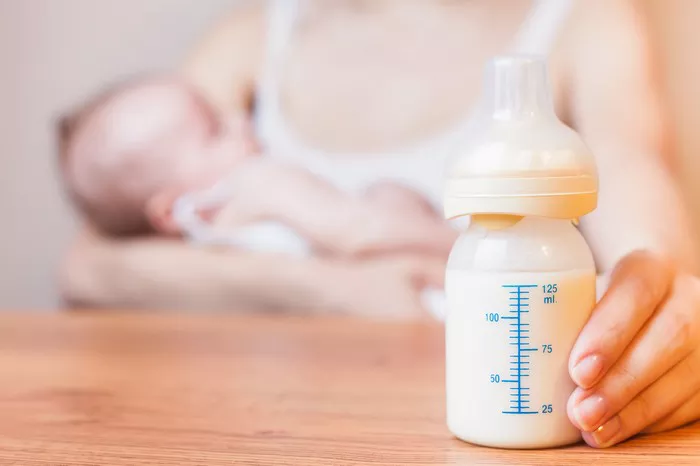When it comes to feeding infants, parents often find themselves navigating through a maze of advice, recommendations, and myths. One common question that arises is whether it’s safe or beneficial to mix cold breast milk with warm formula. Understanding the science behind breast milk and formula composition, as well as the potential effects of temperature variations, can help parents make informed decisions about their baby’s feeding regimen.
Breast Milk and Formula Composition
Breast milk is often referred to as “liquid gold” due to its unmatched nutritional and immunological properties. It contains a precise balance of proteins, fats, carbohydrates, vitamins, minerals, and antibodies tailored specifically to meet a baby’s needs at each stage of development. Additionally, breast milk provides unique benefits such as promoting healthy gut flora and reducing the risk of infections and chronic diseases later in life.
On the other hand, infant formula is designed to mimic the nutritional composition of breast milk as closely as possible. Although formula manufacturers strive to replicate the beneficial components of breast milk, including essential nutrients and antibodies, it’s important to note that formula cannot fully replicate the complexity of breast milk.
Temperature Considerations
Temperature can affect the taste, smell, and nutritional content of breast milk and formula. Breast milk is naturally produced at body temperature (around 98.6°F or 37°C), while formula is typically prepared by mixing powdered or liquid concentrate with warm water according to the manufacturer’s instructions.
Some parents prefer to warm breast milk or formula before feeding, as babies may find it more palatable and easier to digest. However, it’s crucial to avoid overheating breast milk or formula, as excessive heat can destroy valuable nutrients and immune factors.
Mixing Cold Breast Milk with Warm Formula
Now, let’s address the central question: Can you safely mix cold breast milk with warm formula? The short answer is yes, but there are a few important considerations to keep in mind.
1. Temperature Compatibility: Cold breast milk can be mixed with warm formula without causing any harm to the baby. However, extreme temperature differences should be avoided to prevent thermal shock, which could potentially denature proteins and reduce the nutritional value of the milk.
2. Gentle Mixing: When combining breast milk and formula, it’s essential to mix them gently to ensure uniform temperature distribution. Vigorous shaking or stirring could lead to the formation of air bubbles, which may cause discomfort for the baby during feeding.
3. Immediate Consumption: Mixed breast milk and formula should be used immediately or refrigerated promptly if not consumed right away. Bacteria can multiply rapidly in liquid food at room temperature, increasing the risk of contamination and foodborne illness.
4. Refrigeration and Reheating: If you choose to refrigerate mixed breast milk and formula for later use, make sure to store it in a clean, airtight container and use it within 24 hours. When reheating, warm the mixture gently by placing the container in a bowl of warm water or using a bottle warmer. Avoid microwaving, as it can create hot spots and damage the nutritional content of the milk.
5. Observing Baby’s Preferences: Every baby is unique, and some may prefer breast milk at room temperature or even cold. Pay attention to your baby’s cues and preferences when offering mixed breast milk and formula.
Benefits and Considerations
Mixing cold breast milk with warm formula offers several potential benefits:
1. Convenience: Mixing breast milk and formula allows parents to provide a combination of breast milk and formula feeding, accommodating various feeding scenarios such as supplementing breast milk with formula or transitioning from breastfeeding to bottle feeding.
2. Flexibility: Parents can adjust the ratio of breast milk to formula based on their baby’s nutritional needs, feeding preferences, and availability of breast milk.
3. Temperature Preference: Some babies may prefer the taste and texture of mixed breast milk and formula at a certain temperature, whether it’s warm, room temperature, or cold.
However, it’s essential to be mindful of the following considerations:
1. Nutritional Integrity: Mixing breast milk and formula should not compromise the nutritional integrity of either liquid. Parents should ensure that breast milk is expressed and stored properly to maintain its nutritional value.
2. Hygiene and Safety: Proper hygiene practices, such as washing hands and sterilizing feeding equipment, are essential to prevent contamination and reduce the risk of infection for the baby.
3. Individual Needs: While mixing breast milk and formula can be a practical solution for many families, it’s important to consult with healthcare professionals, such as pediatricians or lactation consultants, to address specific concerns or challenges related to feeding.
Conclusion
In conclusion, mixing cold breast milk with warm formula is generally safe and can offer flexibility and convenience for parents. Understanding the nutritional composition of breast milk and formula, as well as proper handling and storage guidelines, is essential for ensuring the health and well-being of the baby. By observing your baby’s cues and preferences and seeking guidance from healthcare professionals when needed, parents can navigate the feeding journey with confidence and peace of mind.


